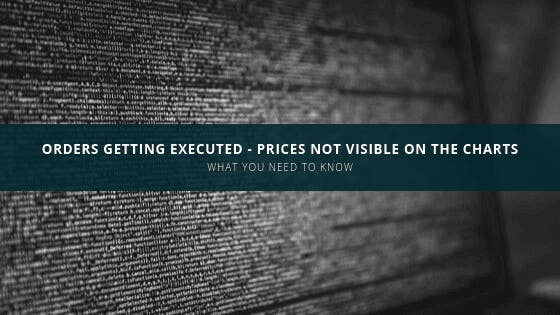
One of the queries we are receiving is about Orders getting executed when prices are not visible on the charts. The confusion has led to a conspiracy theory among traders that have faced this dilemma that it is a kind of malpractice by brokers to deceive the client and earn profits. I can assure you that it is an imaginary demon and we don’t have any vested interests to deceive or manipulate our clients. I believe the misconception is primarily due to the lack of awareness about how order matching and execution works on Indian exchanges. To simplify this, let's understand the essential criteria:
The order matching system at the exchange is fully automated and algorithmic in nature. The trading system at exchanges supports an order-driven market and provides complete transparency of trading operations. Orders, as and when they are received, are first time-stamped and then immediately processed for a potential match. If a match is not found, then the orders are stored in different 'books'. Orders are stored in price-time priority in various books at the exchange in the following sequence:
- Best Price
- Time Priority
The best buy order will match with the best sell order. An order may match partially with another order resulting in multiple trades. For order matching, the best buy order is the one with the highest price and the best sell order is the one with the lowest price. The system views all buy orders available from the point of view of a seller and all sell orders from the point of view of the buyers in the market. So, if all buy orders available in the market at any point in time, a seller would obviously like to sell at the highest possible buy price that is offered. Hence, the best buy order is the order with the highest price and vice-versa.
Orders lying unmatched in the system are 'passive' orders and orders that come in to match the existing orders are called 'active' orders. Orders are always matched at the passive order price. This ensures that the earlier orders get priority over the orders that come in later.
This is the mechanism which executes the order at exchanges but, why don't you see your price on the chart whereas your order has been executed?
The exchanges mainly send two types of data feeds to the subscribers depending upon the time interval. Tick-by-Tick data is the market data that shows price and volume at every tick, it means every single change in the price, volume and change in best bid and ask has been reported to the subscriber of the data feeds. Another type of data feed is Second Pulse which is the last traded price for the particular second and data is transmitted to the following second.
On a normal trading day, there are millions of such ticks recorded, and the exchanges do not send us all the traded data per second. There are times when the OHLC data sent by the exchanges do not show the freak trades which could have occurred during the time frame. In addition to that, NSE Tick-by-Tick data is very expensive to store and transmit as compared to the level-2 data feeds, i.e. Second Pulse. It’s the high-frequency trading desks, arbitrage traders and firms that trade ultra-short-term algorithmic strategies that typically use Tick-by-Tick data. Such trading firms compete for speed in microseconds (1 million microseconds = 1 second) and invest heavily in infrastructure to get an edge over others by just a few microseconds. TBT data has no use case for retail traders as the decision-making criteria are entirely different.
All the trading and brokerage platforms receive a Second Pulse sent by the exchanges, which is the last traded price for a particular second. Brokerages transmit the live data feed from the exchange and onto their platform. In between the two consecutive pulses, a large number of trades can get executed and trades executed between the transmission gap of the two pulses are not captured in the Pulse sent by the exchanges.
As on the charting platform, you see only the second by second OHLC data or tick; it is quite likely that you don't see all the traded prices on the charts in some cases. Unless and until the exchanges (The source of data) provide access to tick-by-tick data, we cannot possibly capture those price points. However, people claim this as a kind of malpractice from the broker’s end, to be clear, brokerages don't have any control over the order execution as it is completely system driven and solely controlled by the exchanges, unlike a quote-driven market wherein the broker is a market-maker and is thus trading against clients.
If your trade is executed on NSE for instance, you can be assured that a particular price is traded and trades can be verified on the NSE's Trade Verification module. Here, data on trades would be available on T+1 day and at any given point in time ten trading days' data would be available for verification. Moreover, as per the regulatory norms exchange has been sending the details of the transactions, by the end of the trading day, on the mobile number and/or email address which are registered by their brokers.
Please note that FYERS does not gain anything by trying to hide or manipulate price/trade data in any manner whatsoever. As a brokerage, we are mainly focused on providing the best trading experience and also increasing awareness about such topics which are not discussed. In this context, I’d also like to mention that FYERS does not indulge in any proprietary trading activities, unlike many other brokers. Hence, there is no way that we can benefit from such alleged manipulations. I hope that I have provided enough clarity to debunk this conspiracy theory :-).
If you find this post useful, share it with fellow traders who have been affected by it but are unaware of the reasons why it can happen sometimes. In case, you have any doubts, you can ask us in the comments section below.
Happy Trading!


